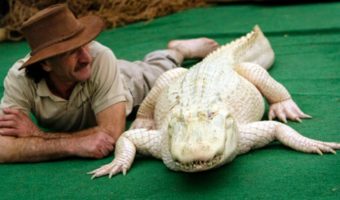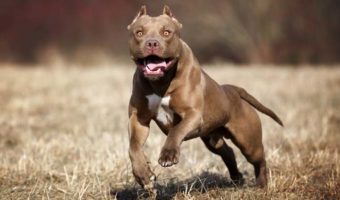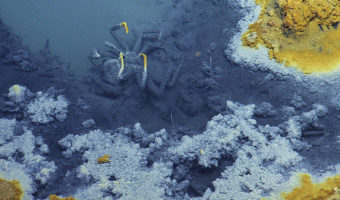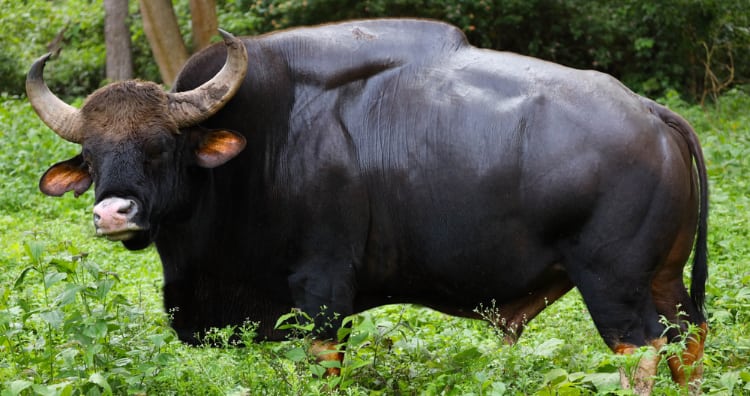What Are These Massive Super-Cows? Find Out About the Gaurs
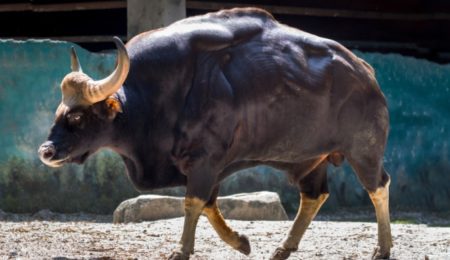
We are all familiar with the logo of the world’s bestselling energy drink, Red Bull. Two red bulls are seen charging each other in front of the setting Sun. But do you know which animal inspired the origin of the branding? If you are all thinking the answer is a bull, you will only be half correct. There is a distinct name for them. It is a Gaur, also called the “Indian Bison,” the largest and tallest among the wild cattle species. They are a close relative of the domesticated cattle, or more like wild cousins of the cows!
Table of Contents
The gaur is the largest and tallest among all wild cattle species.
The gaur is considered the largest extant bovid and one of the most powerful species of wild cattle in the entire world, being bigger than the African buffalo, wild water buffalos, or bison. One will find very few animals that can grow as large as these gaurs. Rhinos, hippos, or elephants are usually only larger than them. And giraffes are taller, of course.
They are strong and massively built. When you see a gaur up close, it is daunting to look at. It has a convex forehead and a head and body length between 8 feet 2 inches to 10 feet 10 inches. The tail is comparatively short, being within 28 to 41 inches. Their shoulders are a massive 56 to 87 inches high, averaging about 5 feet 6 inches in females and 6 feet 2 inches in males. Male gaurs are one-fourth larger and heavier than females. Both males and females have horns that curve inwards. Females are smaller, weighing from 970 to 2,200 pounds and males are much heavier, weighing between 1,296 to 3,307 pounds.
In spite of their size, they are timid in nature.
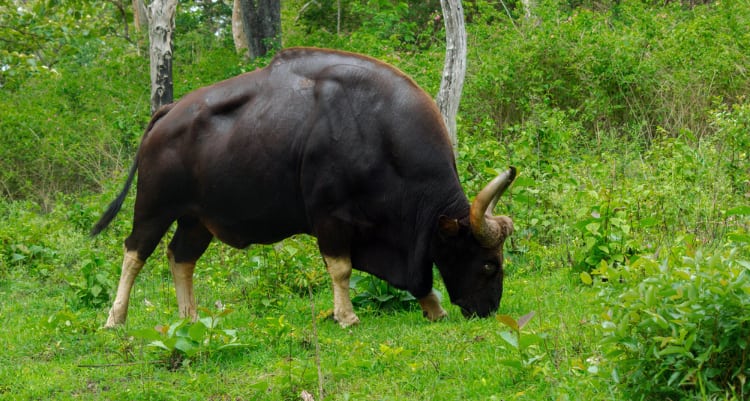
In nature, these animals are diurnal, which means that they are active during the day and sleep at night. But sadly, due to human interference and its impact on the forests, we see a lot of these animals have adapted to nightlife. In central India, for example, the gaurs are the most active at night and rarely seen in the early morning. They may look intimidating because of their size, but unless disturbed, gaurs are usually cautious and timid. Most of their days are spent feeding and resting under the shade when the Sun is too hot, passing their days in calm, uneventful charm.
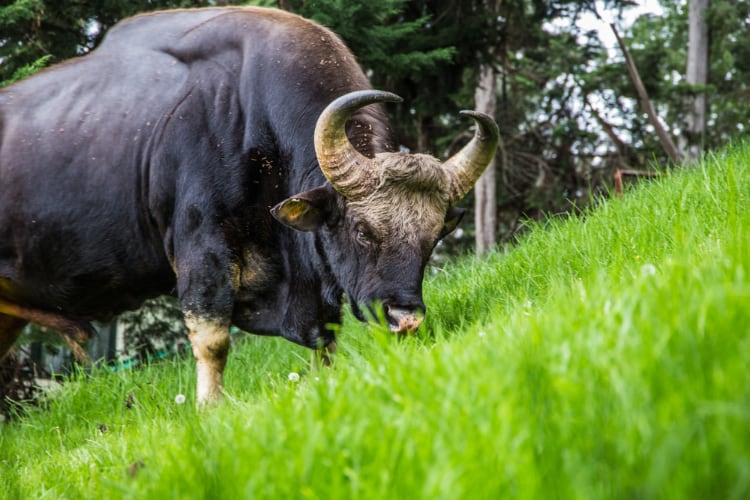
Though 85% of the gaurs are found in India, they are also native to Vietnam, Cambodia, Laos, Thailand, Peninsular Malaysia, Myanmar, Bangladesh, Bhutan, China, and Nepal. They prefer open territories with unobstructed tracts of forests, water, and an infinite supply of grass, shrubs, and trees. But human encroachment on forests makes these animals vulnerable, and they must wander into human territory for food.
There are more reports of tigers killed by gaurs than gaurs killed by tigers.
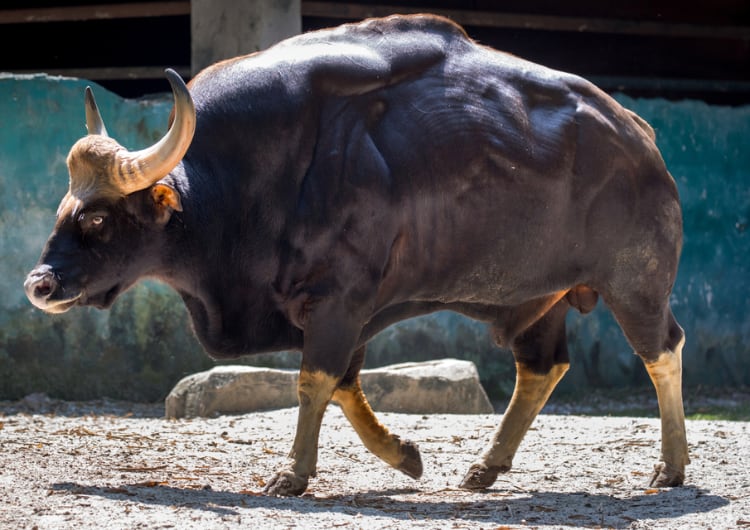
Gaurs are huge and look intimidating, so naturally, they do not have a lot of enemies. Predators usually keep away on account of their size. But if threatened, they can be dangerous to any animal. There have been reports of tigers killed by this bovine. As per a news report from India, a gaur had gored a tigress to death in self-defense, attacking her with its huge horns and slicing open her body at Bandipur Tiger Reserve. The forest officials think that the tigress may have attacked the gaur for food and met her tragic fate in the process.
Tigers seem to be the only formidable opponent of the gaurs because both have the strength and capability to kill each other. Tigers, in fact, do occasionally end up killing young calves and even full-grown gaurs. In Malaysia, there were reports of a herd of gaurs that formed a circle around a calf killed by a tiger and prevented the big cat from enjoying the meal that it killed. It was not allowed anywhere near the carcass. If unguarded or distracted, tigers, leopards, or crocodiles can also attack a gaur, but these incidents are not very common.
The gaur population has been listed as “Vulnerable.”
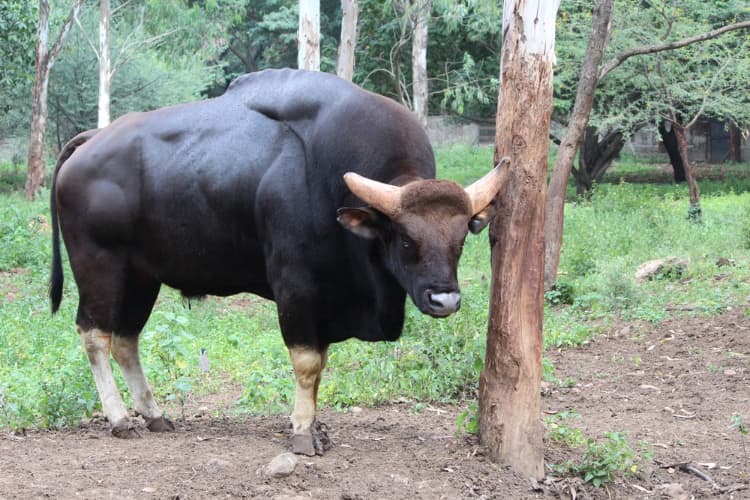
The gaur was listed as “Vulnerable” on the International Union for Conservation of Nature (IUCN) Red List in 1986 because of their declining numbers. They have also been included in Schedule I of the Wild Life Protection Act, 1972. Since then, they have been protected in the national parks of India. The threats that have led to their numbers declining are mostly man-made. The top two reasons are food scarcity and poaching. Other reasons include habitat loss and conflict with humans because of living in such proximity to them.
Food scarcity happens mainly because grasslands are slowly diminishing for commercial purposes, for which they must constantly fight for their food. Hunting of these gaurs for their horns and meat for export also is a major threat to their existence. In the 1990s, gaurs were in high demand from Vietnamese poachers for their commercial value. Not just in India and Vietnam, these animals are also in danger at the hands of poachers from Thailand for trophies and money.
But the good news is that they are being legally protected in all the states, especially in India, and samples of their genetic material are now cryogenically preserved. So hopefully, these animals can be saved from extinction.
Are gaurs dangerous or aggressive?
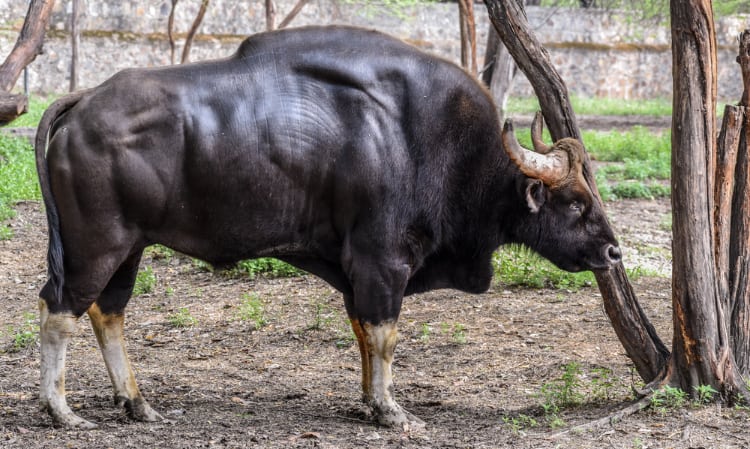
If undisturbed and unthreatened, gaurs do not usually engage in aggressive behavior. But with humans encroaching on more forest lands with every passing day, their habitats get disturbed. Now, these massive herbivores are often found outside their protected areas. There is a large population of these gaurs in South India, where the forests have coffee plantations. Gaurs come in herds at night and brush their horns against the coffee shrubs.
In India, there have been a few human lives lost due to gaurs, but these have been mainly attributed to human-animal encounters. To coexist, humans need to stop venturing out when the gaur usually comes out. Science is baffled by one thing. Gaurs have slowly moved out of forests and entered human-dominated areas, but interestingly, they have learned to coexist peacefully, undergoing behavior changes.
The Red Bull brand logo is inspired by gaurs.

The energy drink Red Bull, which is wildly popular, has its origins in a similar drink called Krating Daeng, in Thailand. It was introduced in 1976 by the pharmacist Chaleo Yoovidhya. The logo on the bottle of Krating Daeng has two wild gaurs about to butt heads in front of a yellow setting Sun. The logo designed by the founder Chaleo evoked the lively spirit of bullfighting which used to be very popular in Thailand. This drink, for marketing to the Western World, was re-branded as Red Bull and put out in bright silver cans. There are rumors that taurine, an ingredient in the energy drink, is derived from the testicles of the bulls. But, contrary to the rumors, it has always been produced synthetically. Nevertheless, the Red Bull logo very rightly evokes the feeling of massive power and energy of the gaurs.
Did you know that an Indian gaur was successfully cloned in 2001 in Iowa with a domestic cow as its surrogate mother? Though the baby seemed to be born healthy, it died within 48 hours due to dysentery.
Share this with your friends!
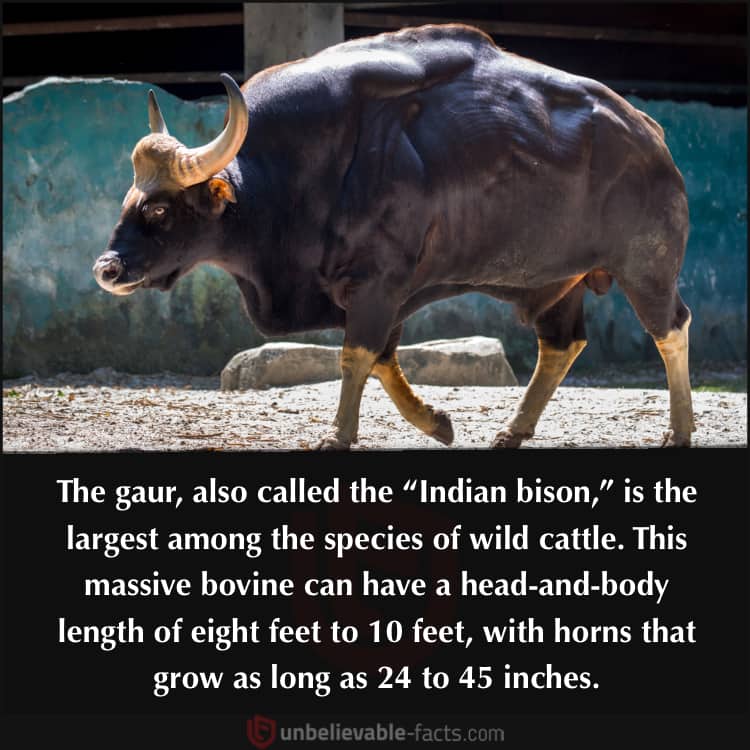
12 Dangerous Creatures that You Should Stay Away from at All Costs

11 Facts About Bob Marley.


11 Lesser-known Facts about the Late Stephen Hawking
